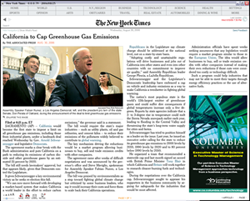Scott Horner, multimedia journalist extraordinaire from the Sun-Sentinel, tells us about the key element to making strong multimedia features: Make sure there’s a complete story!
Scott’s right when he says “interactive graphics aren’t about Flash.” It’s often the case that designers get so caught up in the fun of making things move, adding visual fluff and trying to cram everything in that the story structure is lost.
Here are the “critical parts” of a multimedia piece, as he explains it:
-Story (the backbone of your piece)
-Timing/Format (Will it be a slideshow, package, interactive graphic or other? Also, generally stay under two minutes for slideshows)
-Audio (bad audio = a bad piece, with rare exceptions)
-Visuals (graphics and photos, taken from tight, medium and wide proximities)
Scott emphasized that online features should have a strong story, with a beginning, middle and end. Even print packages that are highly technical in nature should have some sense of story. The mistake often made, he says, is that we tend to focus on the “middle” at the expense of giving the reader a resolution and a sense of setting.
I agree that designers tend to focus too much on the “middle,” as do print graphics. This is largely the result of Flash features being treated exclusively as sidebars . It is rare that a graphic IS the main story in print. Same thing for Web features.
Some would argue that Flash features should not be featured prominently in lieu of a text story. That argument has some merit, due to Flash being less accesible than clean text (for the visually impaired, for dial-up users, those who disable Flash on their browsers). However, there is usually a text-based story available, and the number of users who have broadband and capable browsers is rising dramatically.
I believe it is time for online news sites to regularly feature well-done Flash features as prominently as that lead headline. It is one of the key things we can do that other media outlets generally can’t.
Yet, that will only happen when designers and editors begin to create Flash-based features as complete narratives, not as a supplement.

